Igor Elukov (b. 1991) is a photography artist and film director.
Born and raised in a village on the Peza River, in the north of the Arkhangelsk region (Russia). He currently lives and works in St. Petersburg.
2006 to 2012 Igor studied painting and graphics at an art school. He began to study photography in 2012.
From 2012 to 2016, he has worked on a photo story and the film "SEVERE", documenting the life of the Far North of Russia. Since 2016, Igor has turned his attention to staged photography.
His method is close to pre-digital cinema, which uses shooting of real objects and locations, large-scale models and objects integrated into the natural environment, pyrotechnic effects, light installations and optical illusions, work with animals.
The mound
The main issue in creating the image was a snowy landscape. Usually the Finnish Gulf freezes and you don’t need to go to the Tundra to find a clear horizon, but this year the weather was warm and snowless. There was snow only to the far north and north-east of Russia, and we were deciding where to head.
Fortunately, the weather had mercy on us: some snow fell, and the temperature lowered. The wind at the gulf turned the snow and thin ice into ridges and huge mounds, allowing us not to raise it ourselves. We only needed to find a mound of suitable shape and size. We walked around 30 kilometers along the shore and found a suitable place. It was quickly getting warm, and we had only a day to find the antlers. Thankfully, it wasn’t very difficult, and after going around the town by the evening we had 12 branching antlers which required a little preparation before the shooting (to sand some parts or cut down, remove from the wooden stand and attach to them wooden pegs for easier mounting in the ice).
The next day we went to the location, mounted the antlers in the necessary geographical and color rhythm. The shot took just 4 days of work of 4 people, which is exceptionally fast in comparison to our usual tempo.

Book of Miracles, The mound
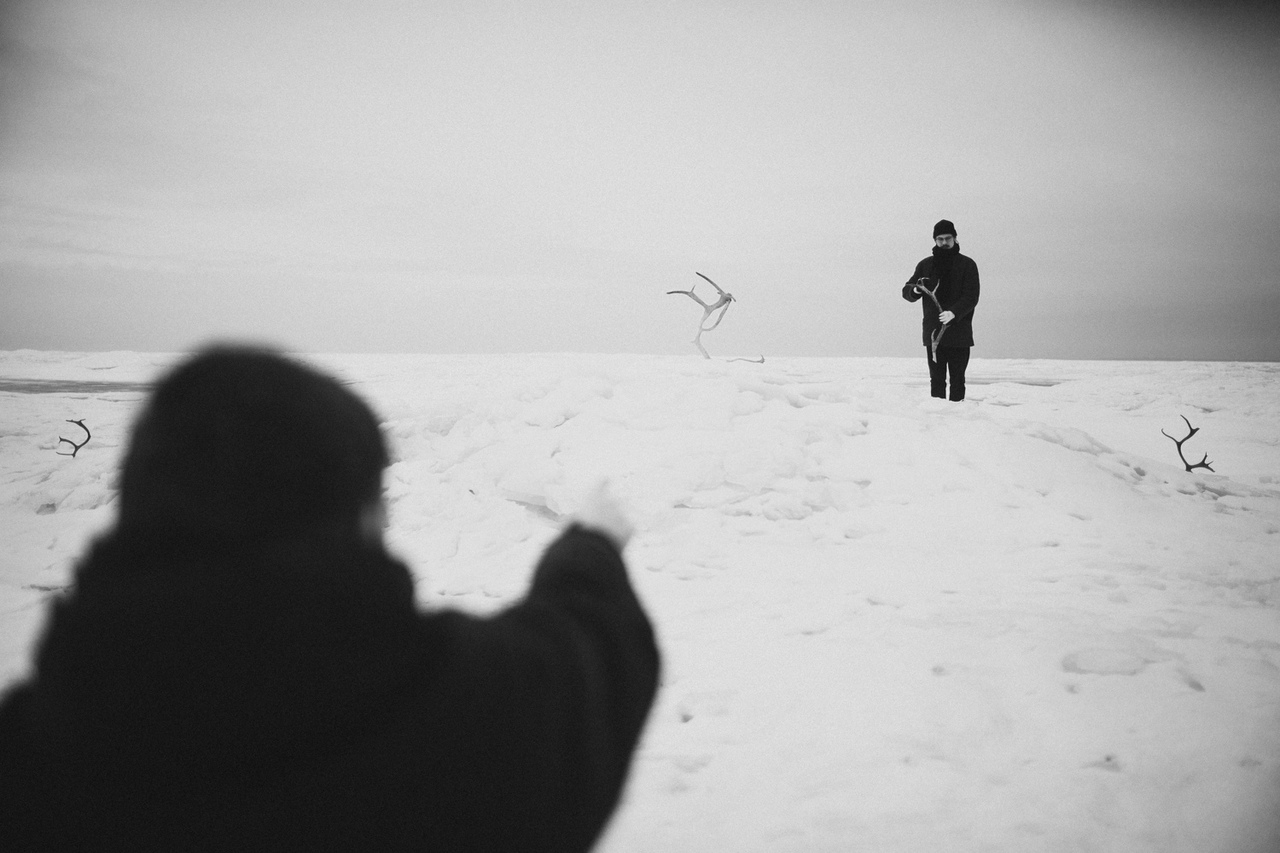
Backstage
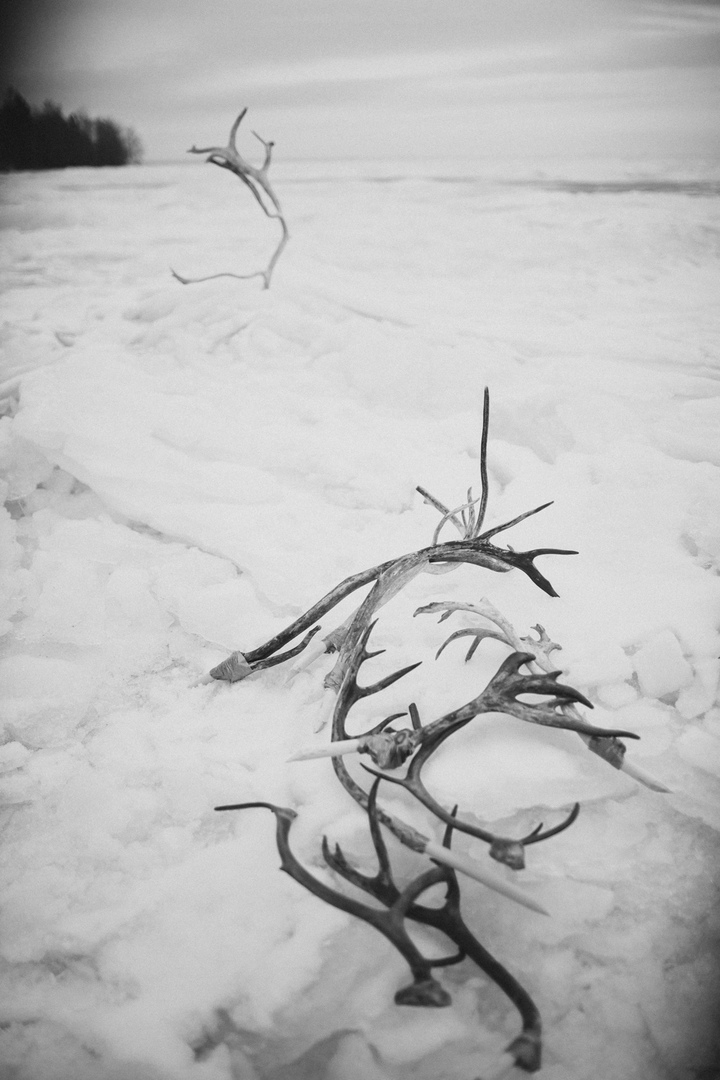
Backstage
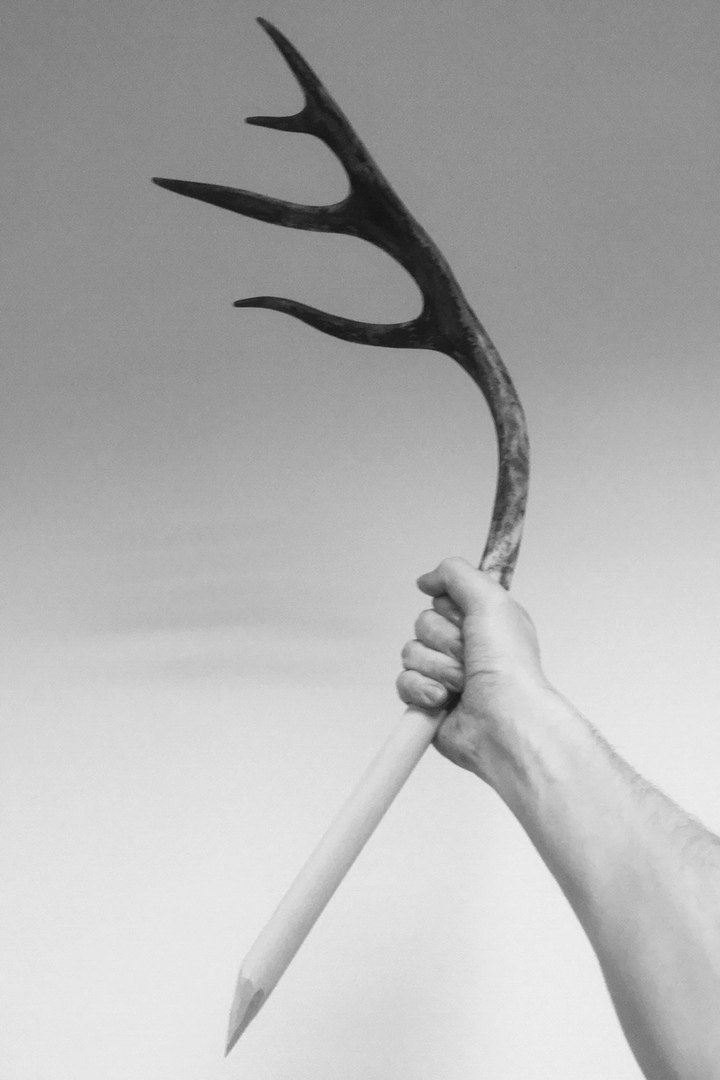
Backstage
The Object
For the shooting of the golden object we didn’t have any more hope for the snow, so we decided to search for something tundra-like without snow. Our beloved land fill of Vasilevskiy Island came to rescue. It had only one problem: the landscape was constantly changing due to the construction working and bulldozers moving around, so coming one day after we could find our spot buried under a pile of sand. The search for the shape of the object, blueprinting and estimation of the materials took us a couple of days. For the object to reflect the light in the necessary way with the required force, we created an autonomous light source out of two accumulators, a dimmer and 15 meters of diode tape. The first day we’ve been cutting out the details; the next day papering them with gold in the studio and shooting in the same day. Until the sunset we’ve been mounting this 15-meter object, more resembling a flying machine; something that the most passerby were sure about.
We created a mound to set the object on top of it, and a hidden moat in front in which we would hide the light. The solution for the light, though, happened unexpectedly: 500 meters behind us the new buildings with the bright illumination and windows reflected soft beautiful light, giving us balanced exposure. But since the shutter speed was set at 30 seconds, nevertheless I highlighted some details of the object with a lamp like with a brush. During all that time the two members of the team have been monitoring the construction, watching the stars and protecting the object from the cold sea wind. In the morning we took some more pictures with a different composition in reflected rising sun, and then dismantled the construction.
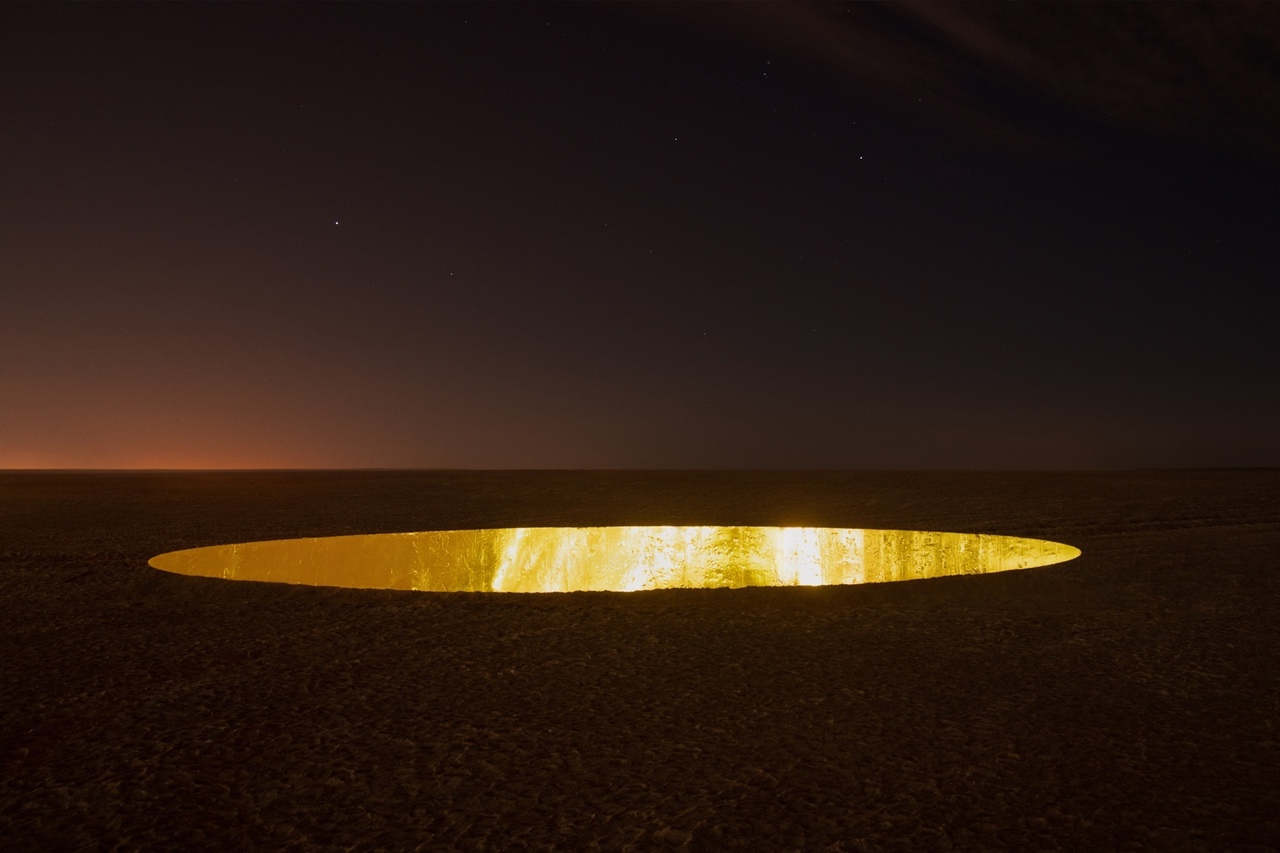
Book of Miracles, The Object

Backstage
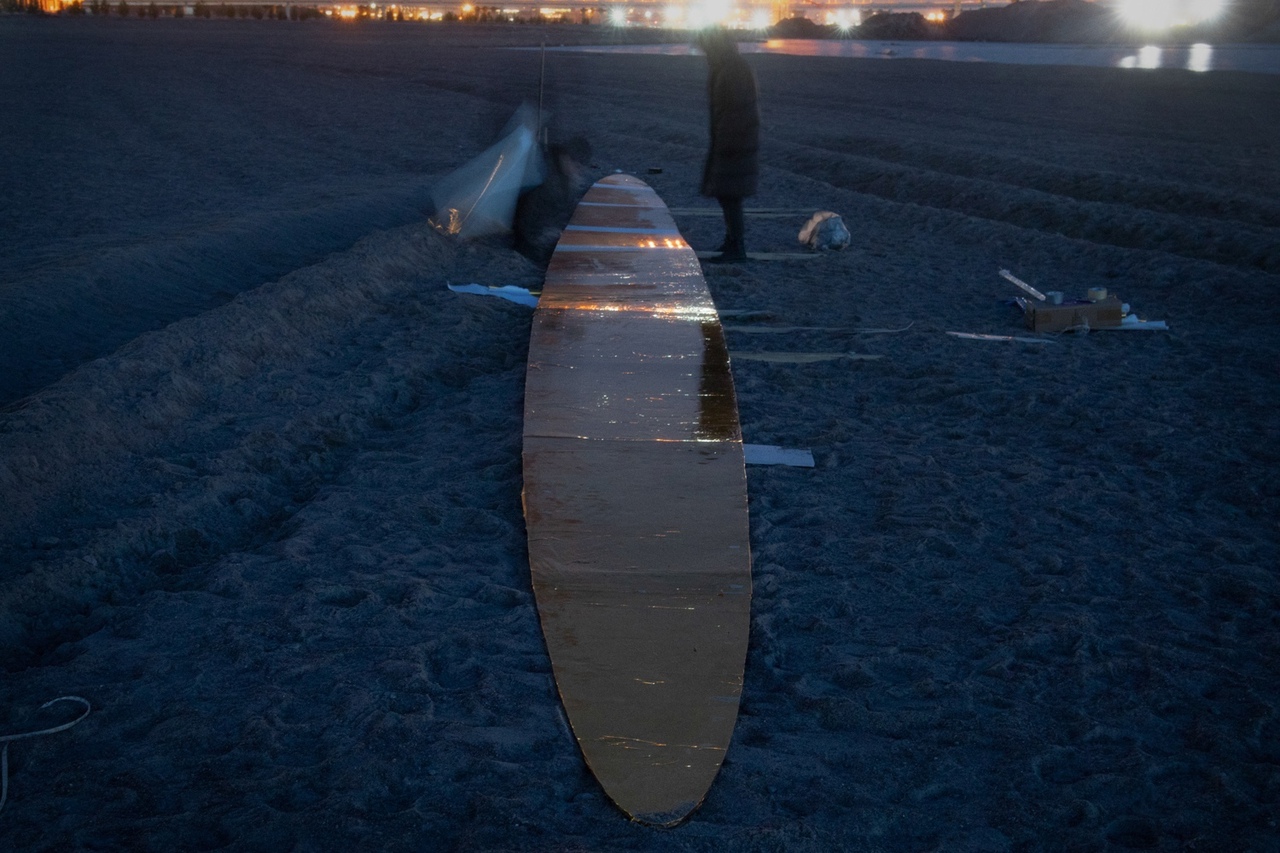
Backstage
The horse
A couple of years ago when we were searching for a location for our very first staged image - a deer in a church, I met and deeply fell in love with the northwest stony shore of the Ladoga Lake. Usually I only work with the landscapes I know since childhood. In the case of the Ladoga shore, though, it wasn’t like the northern landscape I was used to, but we quickly got along. In order to find the location, we’ve been searching for a few days using satellite pictures and have found a suitable spot: a small lake on a rock and a clear horizon on the background. Next, we’ve been checking whether there are animals around, which would play as characters. We found one such place 12 km away from a stable in the end of Sorolansaari Island. A couple of times our guides went riding to explore the shore and confirmed our opinion and the possibility of the expedition. The shooting had to start unexpectedly early: we had to leave Karelia urgently with the last train before it was closing for quarantine. Seems like on the way both there and back we were alone. The passage to the location took us around three hours across the woods and mountains. We came out to the beautiful gulf; on the shore a seal was waiting for us, which later would swim around until the dark. While waiting for the riders, we needed to prepare the location for the shooting and make a passage for the horses; we’ve been moving rocks to create some kind of a pavement. When I heard the horses neighing, I came out to meet the riders (they went out on three stallions). I found them on a steep slope: one of the horses fell down and crushed the rider; fortunately without serious injury for either of them. As it turned out, the passage that we made didn’t fit, and after trying out some others, we agreed that the best way would be to wade across. The two other horses we left before the wade. Then we needed to dry them quickly, because the lights wouldn’t stay mounted on them. During the shooting the Horse was shaking off the lights as they usually do when they want to get rid of annoying flies, and the stars were falling to her feet. Three times we had to set the light again. Some of the diodes we throwed in the river; one part of them drowned and another partially stayed on the surface, what gave us the diversity in the color and intensity of the illumination. The same was with the light on the horse: some of the contacts were weaker, some were stronger, and it affected the intensity of the light. By that time it got dark and we used the headlamps to softly highlight the silhouette. On our way back we got lost in the darkness; and we found the way only by releasing the reins: this way the horses found the right path without our control. Then the moon came out and the way became easier. I injured my knee, and another team member had an allergic asthma attack because of the horse hair; so the way home was both beautiful and difficult. The next day we took the last train and managed to leave Karelia which closed its borders right after us.
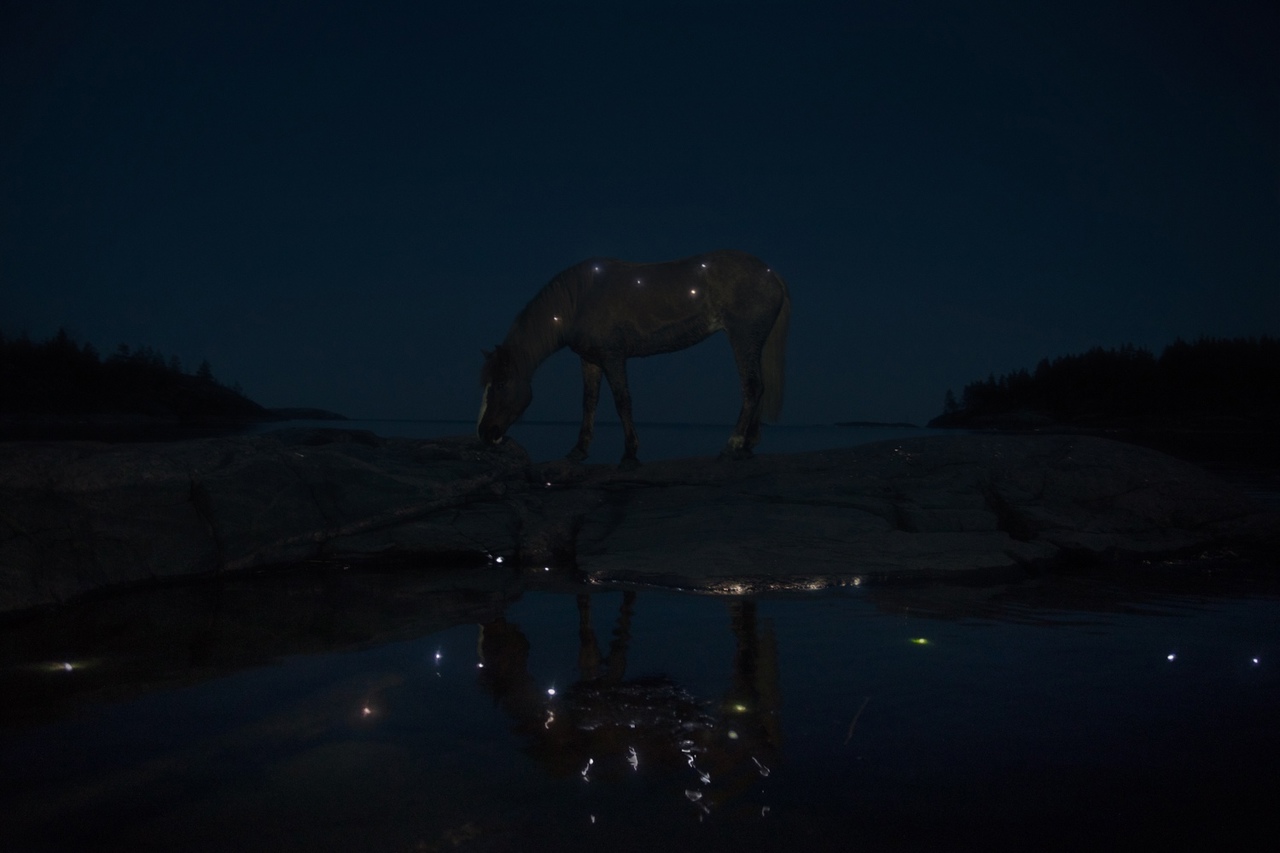
Book of Miracles, The horse
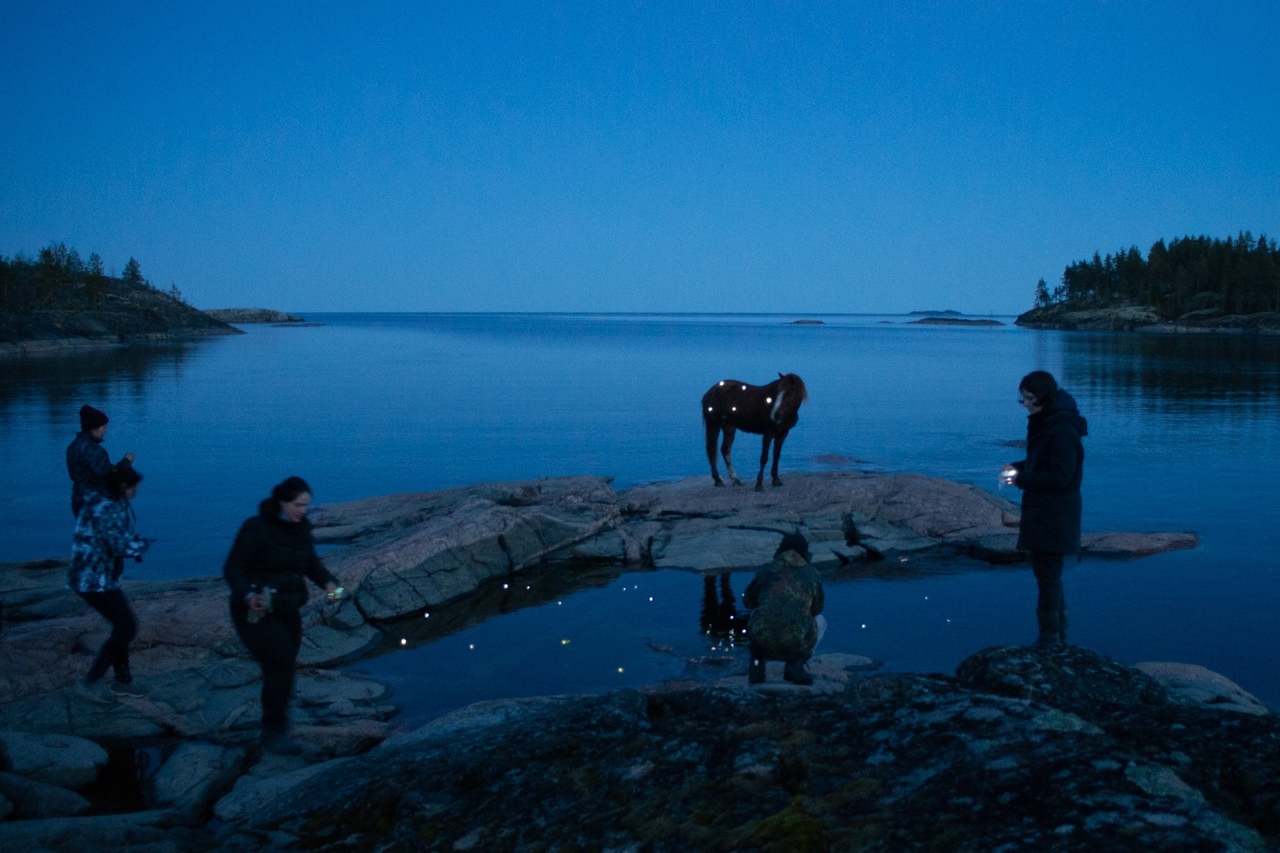
Backstage
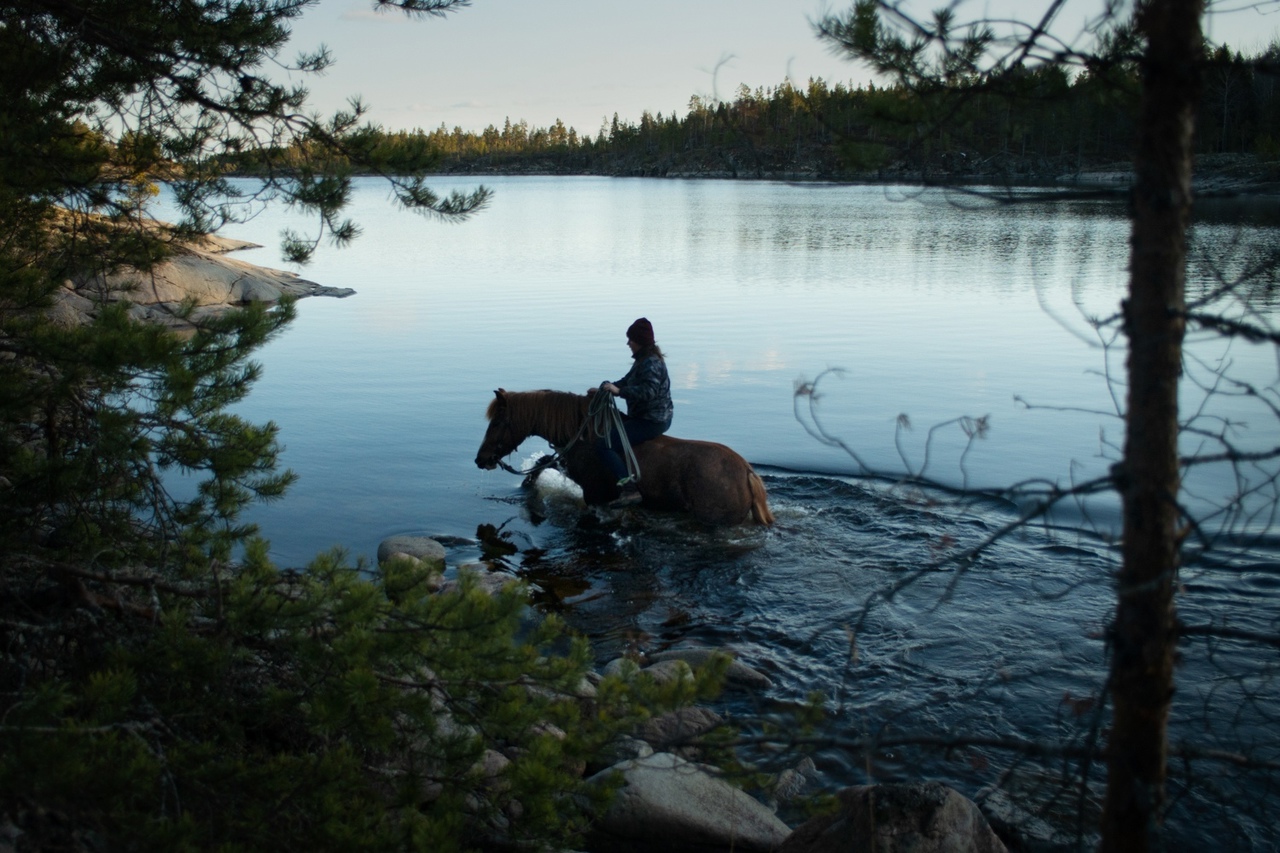
Backstage
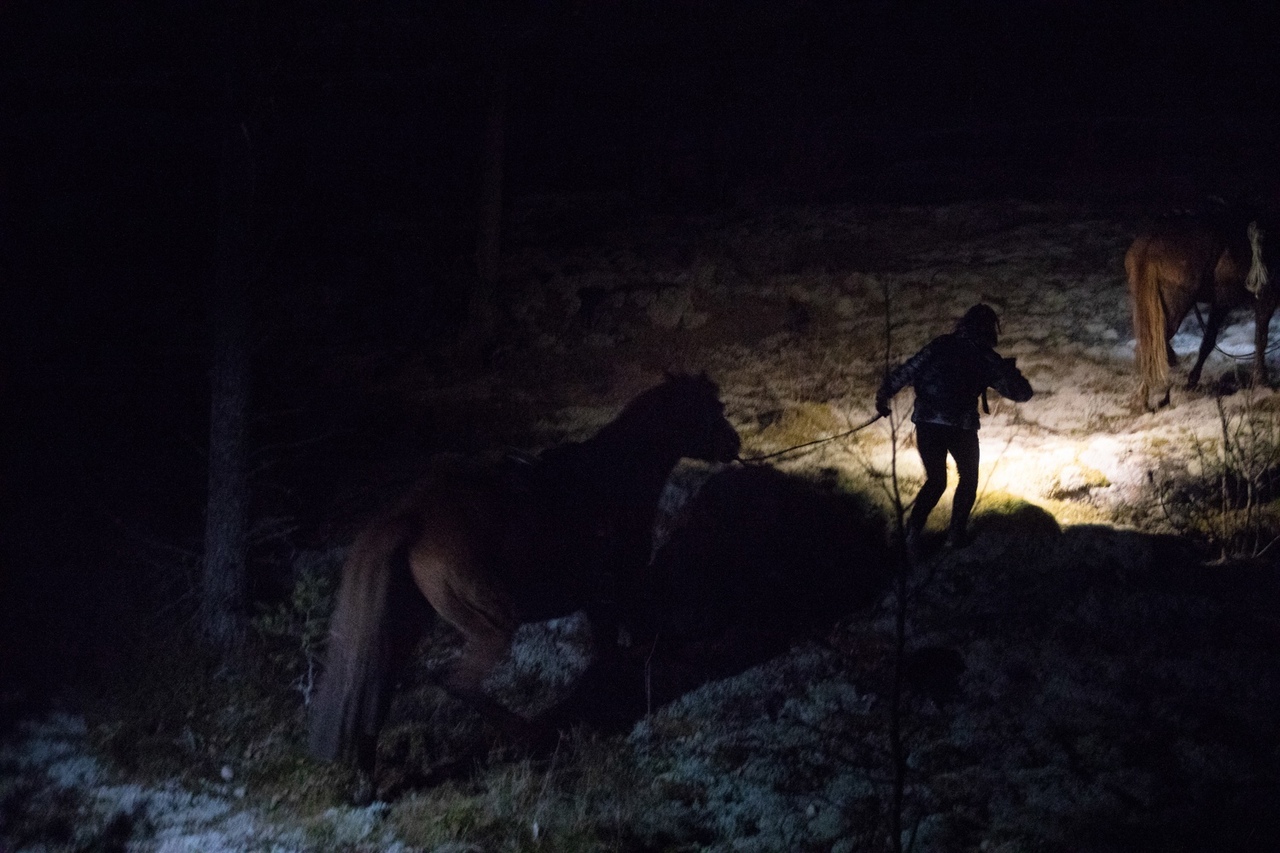
Backstage